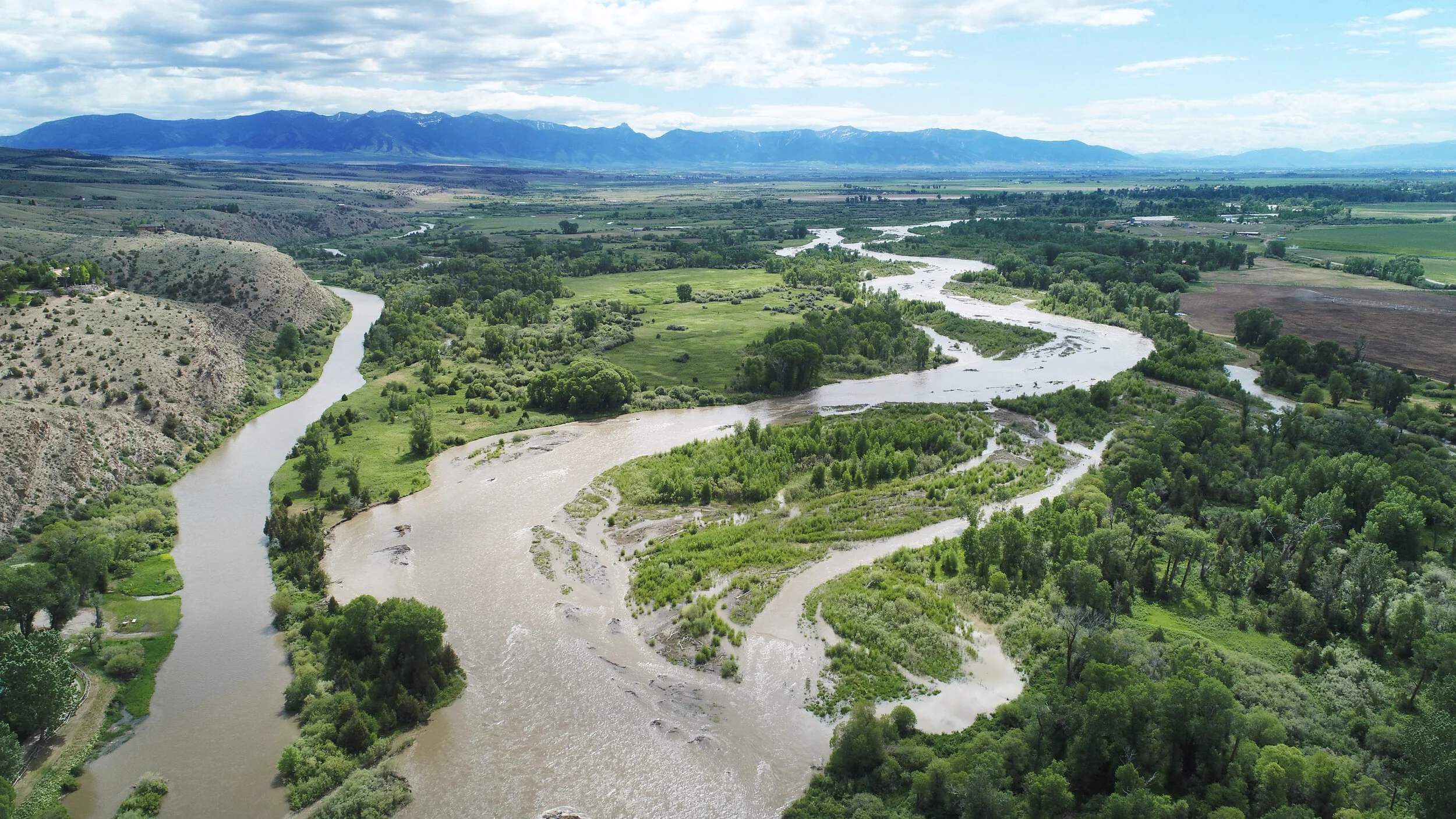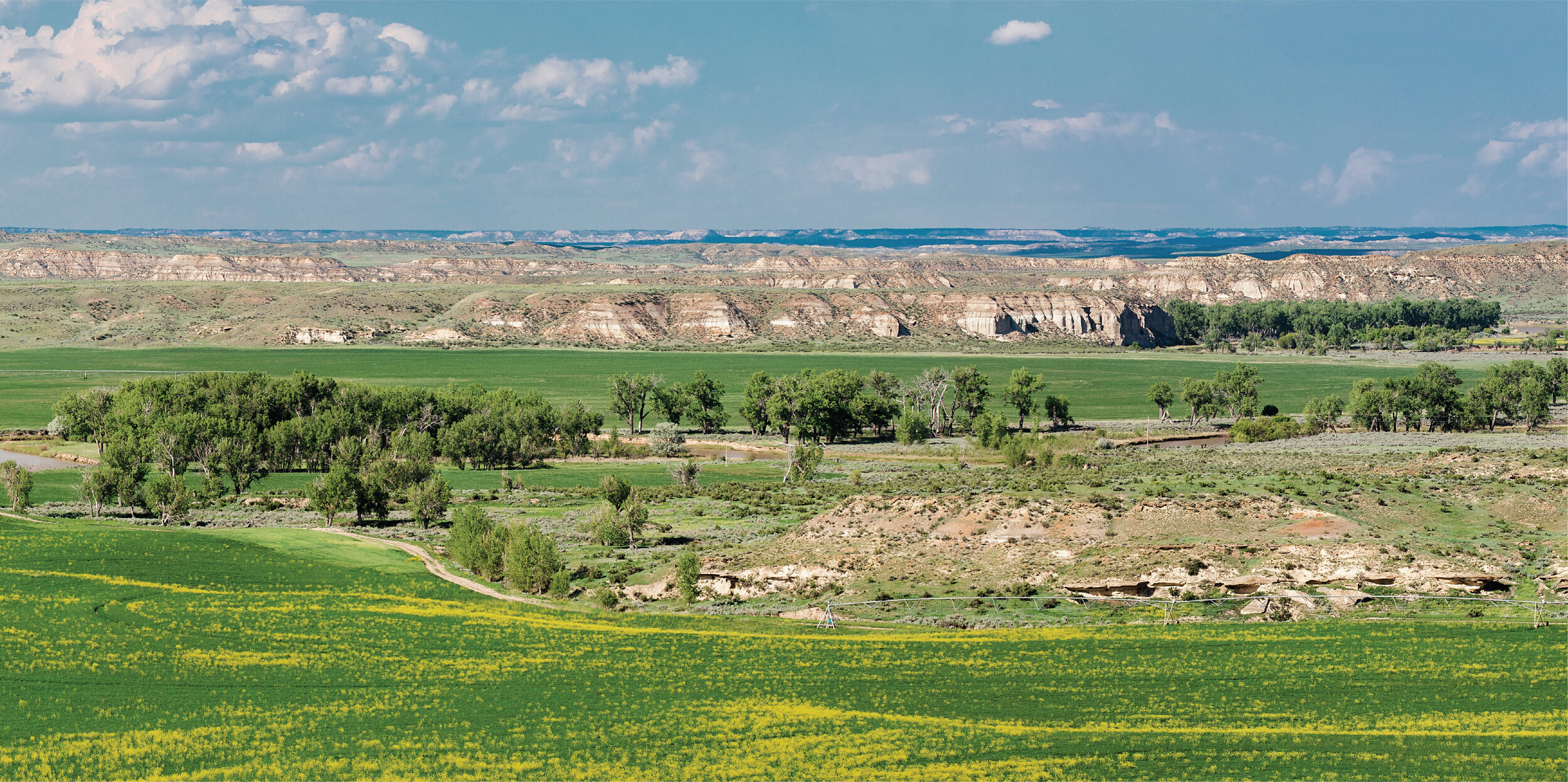Photo by Scott Powell, Montana State University
WATER POLICY AND IRRIGATED AGRICULTURE
no other elements of a water right can be changed. Montana case law has established that water rights are measured by, and limited to, theamount of water historically put to beneficial use,32 and that a change cannot increase consumptive use. Therefore, during the water right change process, the DNRC conducts a historic use analysis to determine the amount of water historically put to beneficial use. The historic consumptive use calculation is not equivalent to the flow rate, volume, and diversionary amount that appear on a water right abstract. This is a common source of confusion for water right holders because most do not know their exact historic consumptive water use unless they have been through the change process.
Water policy and changes in irrigation method
Although the relationships between water policy and changes in irrigation method are complex, the policy is relatively straightforward: an individual’s ability to freely change irrigation method without government approval is protected under law. In fact, Montana law specifically excludes a change in method of irrigation from the definition of a “change in appropriation right” requiring DNRC approval: “A change in appropriation (water) right . . . does not include a change in water use related to the method of irrigation."³¹This enables water users to change their method of irrigation without securing DNRC approval, even though the conversion from flood to sprinkler irrigation has the potential to increase consumptive use beyond historic quantities.
Consider an irrigator who converted from flood to center pivot irrigation at some point after 1973. Her water right is predicated on the amount she consumed historically (pre-1973) to flood irrigate. This irrigator may knowingly or unknowingly increase her consumptive use when she converts to pivot irrigation because of higher crop yields or changes to more water-consumptive crops. If this irrigator then applies to change an element of her water right, DNRC is required to examine present water use compared to historic consumptive use and may document an increase in use. This situation has caused concern about the change process, potentially impeding actions or strategies that require changes to water rights, such as leasing instream flows.The conversion from flood to sprinkler irrigation also has the potential to reduce return flows, despite the fact that Montana policy specifically prevents water users from adversely impacting other water right holders, including disrupting the amount and timing of return flows on which other downstream water users may rely. There is currently no legal mechanism for preemptively regulating both the increase in water consumption and the impacts to return flows that may result from changes in irrigation methods (Case Study 1). As discussed above, this may lead to unintended consequences for watersheds and downstream users in terms of seasonal water supply and availability.
Understanding and quantifying the hydrology, geology, and soil characteristics of a particular system is essential for informed decision-making, but it is only one piece of the complex puzzle of water and irrigation management in Montana. The body of policy around water rights and the ability to change those rights also has enormous influence on why, when, how and how much water moves through irrigated watersheds in Montana. This section provides a brief primer on water policy, examines connections between policy and changes in irrigation methodology, and highlights some of the complexities that exist at the intersection of policy, practice, and hydrology.
Montana water policy basics
The Montana Constitution was first ratified in 1889 and established that all water within state boundaries is property of the state for use by its people. Citizens cannot own water, but instead attain a right to use it. Historically, a person only needed to use water beneficially, i.e. not waste it, to establish a claim. By 1900, law required water users to also file water use claims at district courthouses. In doing so, many water users filed maximum use amounts, so that today the totality of filed water rights exceeds supply in most years.
Through this process of filing historic claims to water, the doctrine of Prior Appropriation was adopted in Montana. This central tenet of water law across the arid western U.S. created a system of priority (i.e., “first in time is first in right”) which ensures that the oldest established water rights are fulfilled before those established at later dates. For the first three quarters of the 20th century, the use of water remained a key way of establishing claim, water rights claims remained decentralized, and information existed only within district courthouses. In 1973, the Montana Legislature passed the Montana Water Use Act. (MWUA),28 requiring all water users to file their historic water use claims with the state. In addition to establishment of a central water rights database, the law created a system for issuing new (post-1973) water rights, or ‘permits’, through the Montana Department of Natural Resources and Conservation (DNRC), and a process for changing parts of a water right. The MWUA outlined a statewide water right adjudication process, and in 1979 the newly established Montana Water Court began examining and finalizing all pre-1973 claims, a process that is still ongoing.
Water rights (pre-1973 claims and post-1973 permits, collectively) describe when, where, why, how much, and for how long water can be used. Components of a water right include priority date, water source, point of diversion, purpose of use (also called beneficial usel), place of use, flow rate and volume, period of use, and period of diversion.29, 30 Water users can apply to DNRC to change up to four elements of their water right: the point of diversion, place of use, purpose of use, or place of storage;31
CASE STUDY 1: U.S. Supreme Court decision for the Tongue River Basin (Montana v. Wyoming)33-36
Does conversion from flood to sprinkler irrigation lead to conservation of water? An excellent example of the confusion surrounding this issue is illustrated by the outcome of Montana’s litigation with Wyoming over violations of the Yellowstone River Compact. Water shortages in the Tongue and Powder River sub-basins during the drought of 2000 to 2006 motivated Montana to litigate four claims of damages before the U.S. Supreme Court. One claim was that Wyoming’s conversion from flood to sprinkler irrigation in the Tongue River basin had increased water consumption to the detriment of downstream Montana water users. Montana’s brief alleged that Wyoming’s conversion to sprinklers in the Tongue River Basin increased water consumption from 65% of water diverted to 90%; as a result, return flows were reduced from 35% of diverted water to only 10%, and this had harmed downstream Montana water users. The Special Master ᵐ found that these improvements, although resulting in increased Wyoming consumption, were permissible under the Compact, and the Court ultimately endorsed this conclusion.
The Master sought to answer the following question:
[C]an an agricultural appropriator, increase his or her consumption of water, on the same irrigated acreage to which the
Photo by Todd Klassy
Montana filed numerous exceptions to this finding based on Compact interpretation. Montana
held that it was guaranteed a certain amount of water crossing the state line to satisfy its needs at the time of Compact ratification in 1950, and that Wyoming’s conversion to sprinklers reduced that volume and violated that guarantee. The Court upheld the Master’s conclusion with a vote of seven to one, with Justice Scalia dissenting.
Ironically, the Master also supported his conclusion stating that it furthers the important policy objective of improving water conservation. However, at the larger watershed scale view, where increased consumption may reduce downstream streamflow, alter the historic pattern of return flow, and affect other water uses dependent on that pattern, it is problematic to claim that this amounts to conservation – or the use and consumption of less – water.
appropriative right attaches, to the detriment of downstream appropriators, in the same water system from which the water was originally withdrawn?
The Master performed an exhaustive review of western case law regarding the doctrines of prior appropriation and recapture of water, and concluded:
“Given the law of prior appropriation both at the time the Compact was negotiated and today, I conclude that the Compact does not prohibit Wyoming from allowing pre-1950 appropriators in the State to increase their consumption of water on the lands they were irrigating as of January 1, 1950 by improving their irrigation systems, even when that reduces the runoff that reaches Montana.”
Table of Contents | Key Messages | Water and Irrigated Agriculture | Irrigated Agriculture in Montana | The Paradox of Irrigation Efficiency | Hydrology of Irrigated Agriculture | Assessing Consequences of Changing Irrigation Methods | Water Policy and Irrigated Agriculture | Adapting to Change | Conclusion | List of Contributors | Glossary | Footnotes | References

